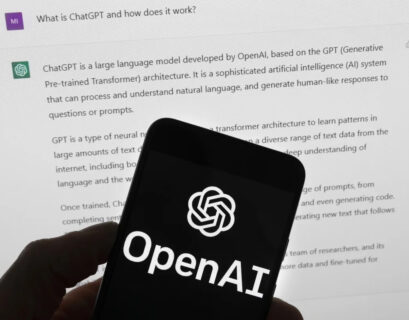Organizations looking to derive value from innovative AI technologies are increasingly focusing on leveraging their data. When utilized effectively, this valuable corporate data can play a crucial role in enhancing operational efficiencies and identifying new revenue streams, which are essential components for gaining a competitive edge.
According to McKinsey & Company, generative AI has the potential to increase annual profits by \(2.6 to \)4.4 trillion. This encouraging forecast is prompting numerous enterprises to explore generative AI applications for tasks such as creating sales and marketing materials, generating ideas for new digital products, and even coding software programs.
Like any emerging technology, generative AI services carry inherent risks and uncertainties. However, implementing generative AI solutions within your data infrastructure could offer increased flexibility and data control. Here are three key strategies to mitigate the security risks associated with generative AI.
Key Points:
- Generative AI is projected to boost annual profits by \(2.6 to \)4.4 trillion.
- 45% of IT decision-makers identified data and intellectual property (IP) risks as the primary reason for their reluctance to embrace generative AI.
- 82% of IT decision-makers expressed interest in adopting an on-premises or hybrid approach to developing their generative AI solution.
Evaluating the Numerous Risks Associated with Generative AI
Maintaining control is crucial, especially as concerns regarding the management of generative AI technologies continue to grow. Many employees are already leveraging text, image, and video generators to enhance their daily workflows, often without the approval of IT, leading to the emergence of shadow AI.
The generative nature of the output from these systems means they have the potential to inadvertently reveal information from the training data. Large language models (LLMs) can inherit biases present in the data used for training or generate inaccurate content, both of which can have ethical and legal ramifications for your organization.
Furthermore, LLMs could be manipulated to produce malicious code, such as phishing schemes and other types of malware. Generative AI services are vulnerable to prompt injection attacks, where threat actors can extract prompts and any uploaded files from employees to manipulate outcomes. Additionally, with the advancement of social engineering tactics, malicious actors are becoming more proficient at creating realistic deep fake content.
Protecting the data used to train LLMs may require additional security measures to prevent unauthorized disclosure of sensitive information. Data sovereignty regulations dictate how data is stored, processed, and utilized globally, presenting a significant challenge for IT leaders weighing the risks associated with adopting generative AI. A recent survey by Dell revealed that 45% of IT decision-makers are hesitant to embrace generative AI due to concerns about data and IP risks.
Implementing On-Premises Solutions for Risk Mitigation
While there is no one-size-fits-all solution for safeguarding corporate assets, training and enhancing a generative AI model on-premises can help mitigate biases, misinformation, and other data-related threats. Consider your on-premises data center as a secure vault protecting your valuable intellectual property, enabling you to prioritize security, privacy, governance, and control.
To enhance data protection measures and safeguard corporate assets, implementing a zero-trust strategy can be beneficial. This approach allows you to control data access, determine data sharing permissions, and address security issues effectively. By adhering to zero-trust principles, you can encrypt and monitor data while establishing governance and communication protocols for responsible data usage.
Navigating Generative AI in a Multi-Cloud Environment
While on-premises deployment may offer optimal security and customization for generative AI models, some organizations may require a more versatile, portable approach. This could involve running generative AI applications across various operating environments, close to the data sources. In such cases, organizations may opt to develop applications on-premises and run them in private or public clouds for enhanced agility, or at the edge to minimize latency.
A recent survey conducted by Dell indicated that 82% of IT decision-makers are interested in pursuing an on-premises or hybrid strategy for developing their generative AI solutions. Determining the most suitable environment for securely running generative AI workloads can be challenging, especially when organizations lack the necessary expertise. This is where partnering with an ecosystem of experts becomes invaluable.
Dell Technologies offers a comprehensive portfolio of generative AI solutions, encompassing client devices and server infrastructure to support your AI workload requirements. By adopting a zero-trust architectural approach, Dell is well-equipped to assist you in securing your applications and data as you progressively integrate generative AI technologies into your operations.
For more insights on how Dell approaches the convergence of generative AI and cybersecurity, visit their website.
This content was provided by Dell Technologies in collaboration with Insider Studios .










